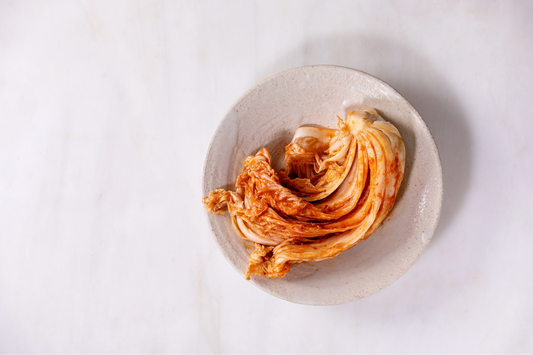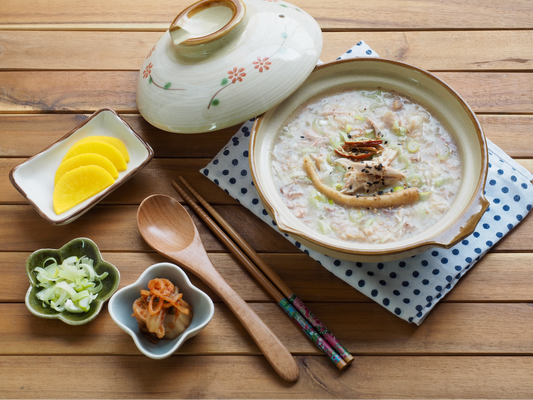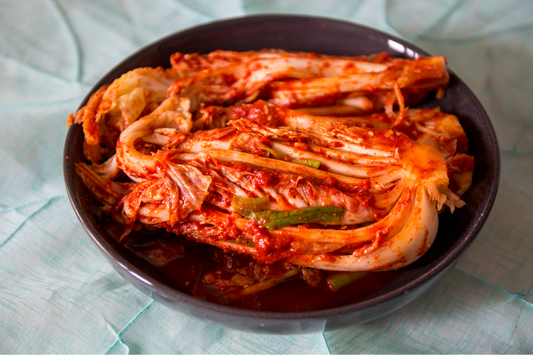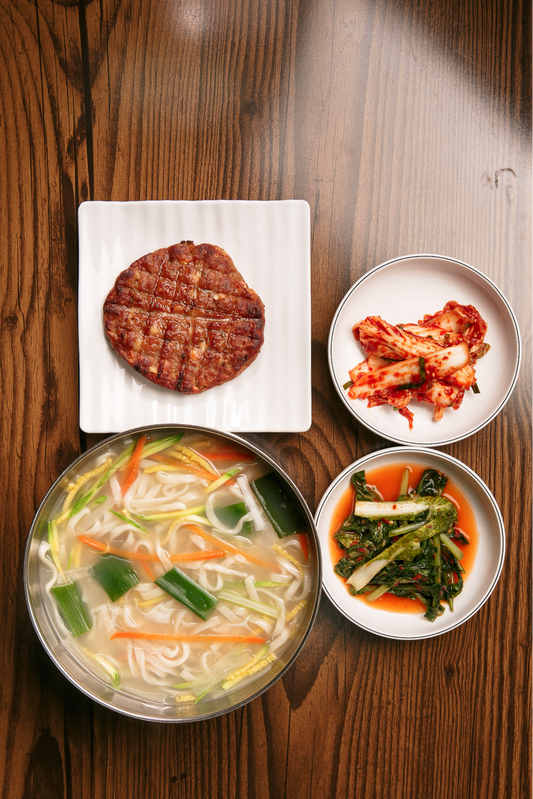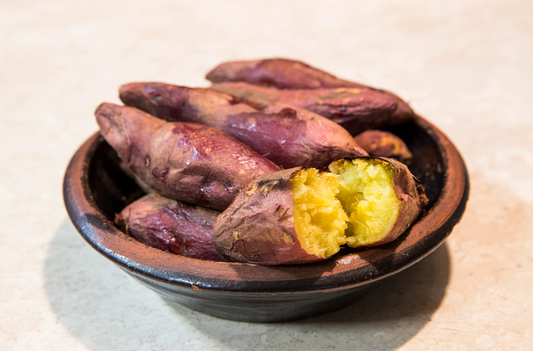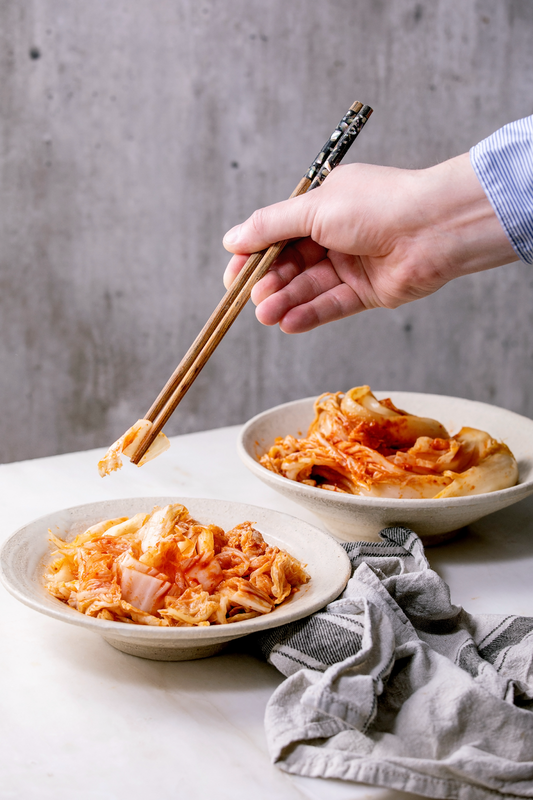Ever wondered how to make Korean kimchi like a pro? Kimchi is a favorite in Korean food, loved for its tangy, spicy taste. But, making it at home can be tricky. We'll share tips to help you avoid failures and make great kimchi.
Myung Ja Cho, a kimchi expert with 71 years of experience, says quality ingredients and attention to detail are key. She suggests using Korean sun-dried gochugaru for flavor and a brine with 3% salt. Properly salting and rinsing cabbage is also important for the right taste and texture.
Managing fermentation is crucial for delicious kimchi. Fermentation time changes with temperature, from 12 to 24 hours in warm weather. Young kimchi is great for cold dishes, while older kimchi is better for soups. By controlling fermentation, you can make kimchi that tastes just right.
Key Takeaways
- Use high-quality ingredients, especially Korean sun-dried gochugaru, for the best flavor
- Ensure the brine has a salinity of about 3%, similar to ocean water
- Properly salt and rinse the cabbage for the right texture and taste
- Manage the fermentation process according to temperature and desired taste
- Younger kimchis are suitable for cold dishes, while older kimchis are ideal for soups and stews
Kimchi is Too Sour or Too Spicy
Finding the right balance in kimchi seasoning can be tricky. If your kimchi is too sour, it might have fermented too much. On the other hand, if it's too spicy, you might need to adjust the flavor. Let's look at some ways to solve these common problems.
Over-Fermentation: Solutions for When Kimchi Has Fermented Too Much
If your kimchi is too sour from over-fermentation, don't worry. Mixing it with other ingredients can help soften the flavor. Try adding it to kimchi fried rice or kimchi jjigae stew. A recipe for kimchi jjigae stew uses 3 cups of sour kimchi, showing it can be used well.
Another option is to let the kimchi age in the fridge after initial fermentation. Over time, it will become tangier and more sour. Experiment with different aging times to find the perfect sourness for you.
Seasoning Issues: How to Adjust Seasoning When It's Too Strong or Too Weak
If your kimchi is too spicy, adjusting the seasoning is crucial. Mixing it with milder kimchi can balance the heat. A participant in a discussion about fixing spicy kimchi found this method effective.
To avoid overly spicy kimchi, use less pepper flakes than traditional recipes suggest. This advice helps make kimchi milder. Remember, gochugaru and gochujang have different flavors, so adjust accordingly.
If your kimchi seasoning is too weak, add more kimchi paste or gochugaru. To dilute strong seasoning, add more unseasoned vegetables like napa cabbage or Korean radish. These can help reduce the spiciness.
Don't be afraid to experiment with your kimchi recipe. Adding different vegetables like carrots or banana peppers can introduce new flavors and textures to your kimchi.
By understanding the causes of kimchi seasoning issues and using these solutions, you can adjust your kimchi flavor. This way, you can achieve the perfect balance of sourness and spiciness.

Kimchi Becomes Mushy or Too Watery
Kimchi, a favorite Korean side dish, can sometimes become mushy or watery. This problem is more common than you might think. But, there are ways to prevent and fix it. By understanding the causes, like salting issues and temperature, you can keep your kimchi perfect.
Salting the Cabbage: Solutions for Over or Under-Salting the Napa Cabbage
Salting the napa cabbage is key in making kimchi. Too much salt can make it mushy, while too little can stop it from fermenting right. To avoid these problems, measure the salt carefully and follow the brining time. If it's too salty, rinse the cabbage to remove excess salt.
If it's not salty enough, add more salt to the mix. This will balance the flavors.
Experts say that too much of certain bacteria can make kimchi slimy. This is usually due to an imbalance, not harmful bacteria.
Fermentation Process: How to Fix Mistakes During the Fermentation Process
The fermentation process is also crucial for avoiding mushy or watery kimchi. Keep the temperature between 39-59°F (4-15°C) for best results. If it's too warm, the kimchi will ferment too fast and become soft.
To fix this, move the kimchi to a cooler spot or refrigerate it. Also, watch what ingredients you use. Too much sugar, Korean leek, or rice paste can make it slimy.
By following these tips and paying attention to salting and fermentation, you can make delicious kimchi every time. Even if it's a bit mushy or watery, it's still great in dishes like kimchi stew or fried rice.

Kimchi Lacks a Tangy Taste or Doesn't Ferment
If your homemade kimchi is missing that tangy taste or isn't fermenting, don't worry. A few tweaks can help. Temperature is key in fermentation. If it's not right, your kimchi might take longer to get sour or not ferment at all.
Fermentation Temperature
The best temperature for kimchi fermentation is between 39°F and 59°F (4°C to 15°C). If it's too cold, fermentation slows down or stops. Try moving your kimchi to a warmer spot in your home. Some people suggest changing its location to speed up fermentation.
If you live in a cool place, consider using a fermentation heating pad. This keeps your kimchi at the right temperature.
Kimchi can ripen in as little as 12 to 18 hours during summer months and may take 24 to 48 hours in cooler weather.
Under-Fermentation
Under-fermentation can happen for many reasons, like low temperature or not enough time. If your kimchi is still not sour, let it ferment longer. Some people suggest leaving it at room temperature for at least 2 days.
Adding a bit of sugar or rice flour can help. These foods feed the bacteria, starting fermentation. Using non-chlorinated water can also help, as chlorine can slow down bacteria growth.
Trust your senses when checking fermentation. Kimchi tastes sour when it's ready. If it's not sour after a few days, try these tips. Remember, fermentation time can vary based on several factors.

Mold Forms on Kimchi
Kimchi is a fermented food that doesn't spoil easily because of its acidity. However, mold can still appear on its surface if we don't take the right steps. A 2018 study in the Journal of Microbiology found that white spots on kimchi are actually yeast, not mold. This yeast grows on kimchi when it's exposed to air, especially on cabbage pieces not fully covered in brine.
Cleanliness Issues: How to maintain cleanliness of the kimchi container and ingredients.
Keeping the kimchi container clean is key to stopping mold growth. Before making kimchi, wash and sterilize all tools and ingredients well. Use fresh produce and make sure all cabbage and vegetables are fully covered in liquid. This reduces air exposure. Also, salting the cabbage properly is important, as salt helps prevent mold in vegetable fermentation.
Mold is rare in fermenting vegetables if the brine is salty enough and conditions are right. This allows culturing to happen below the brine, where it's oxygen-free.
Fermentation Check: Tips for checking the fermentation state to prevent mold formation.
Checking your kimchi's fermentation state regularly can stop mold from forming. Keep kimchi in a fridge at 39 degrees Fahrenheit or lower. It's best to store it on the upper shelves where it's coolest. This helps prevent yeast growth, which usually shows up a few months into fermentation. The best temperature for vegetable fermentation is around 65°F to 70°F.
If you see a white, flat film on your kimchi, it might be kahm yeast, not mold. But if you notice raised, fuzzy spots that are green, black, red, or pink, they're likely mold. In these cases, it's best to throw out the batch to avoid health risks. A 2022 study in "Food Microbiology" found no toxins in the yeast on kimchi when tested in a lab.
Kimchi Tastes Bland or Lacks Flavor
When your homemade kimchi tastes bland, it can be a letdown. But, you can fix it with a few tweaks. Often, it's because of too little seasoning or an off balance of flavors. By tweaking the seasoning and balancing the flavors, you can turn your bland kimchi into a tasty treat.

Insufficient Seasoning: How to Re-Adjust the Seasoning
If your kimchi is too mild, add more seasoning. Start by adding more kimchi paste, the core of its flavor. Mix in more paste until it tastes right. Other ingredients like gochugaru, garlic, ginger, and fish sauce can also boost the flavor.
- Gochugaru (Korean red pepper flakes)
- Minced garlic
- Grated ginger
- Fish sauce
Introduce these ingredients slowly, tasting as you go. This way, you won't overpower the kimchi's taste. Remember, adjusting seasoning takes patience and a good sense of taste.
Flavor Balance: Tips for Balancing Flavors
Getting the flavors right in kimchi is key. It should be sweet, salty, and spicy in perfect harmony. If it's too sweet, add salt or gochugaru. If it's too salty, add veggies or a bit of water.
Kimchi is an art of balance. Fine-tuning the ratios of sweet, salty, and spicy elements is key to achieving the perfect flavor profile.
For a spicier kimchi, add more gochugaru or fresh chili peppers. Remember, it will get spicier as it ferments, so start with a small amount.
By following these tips, you can make your kimchi taste amazing. Don't be shy to try new things and trust your taste. Your taste buds will guide you to making the perfect kimchi for you.

How to Make Fail-Proof Kimchi Using Quick Kimchi
Quick kimchi is perfect for beginners or those who want a quicker method. It involves mixing a seasoning paste with vegetables, then letting it ferment for 1-2 days. This way, you can adjust the seasoning before it ferments, ensuring a tasty result.
Start with fresh, quality ingredients for your quick kimchi. Sterilize your tools to avoid bacteria. Keep the fermentation temperature between 65-75°F (18-24°C) for the best results.
A popular quick kimchi recipe, "Emergency Kimchi," is quick to make and has over 1.8 million views on YouTube. It makes about 3 quarts of kimchi from two 3-pound Napa cabbages. It's great for beginners.
Kimchi is also good for you. A study showed it helped chickens recover from a virus. It's also low in calories and fat, helping Koreans stay slim.
By following these tips and using the quick kimchi method, you can make a delicious and healthy dish. Enjoy kimchi's flavor and health benefits in your meals.
FAQ
How can I prevent my kimchi from becoming too sour or over-fermented?
Keep an eye on your kimchi and taste it often. If it's too sour, mix it into dishes like fried rice or stew. This will soften the flavor. Also, storing kimchi in the fridge slows down fermentation.
What should I do if my kimchi seasoning is too strong, spicy, or weak?
For too strong or spicy seasoning, add more unseasoned veggies like napa cabbage or daikon radish. For weak seasoning, add more kimchi paste or gochugaru to increase the flavor.
How can I prevent my kimchi from becoming mushy or watery?
Use the right amount of salt and don't brine the cabbage too long to avoid over-salting. Keep the fermentation temperature between 39-59°F (4-15°C) to prevent it from getting too watery or soft.
What should I do if my kimchi lacks a tangy taste or doesn't seem to be fermenting?
Kimchi ferments best at 39-59°F (4-15°C). If it's too cold, move it to a warmer spot or use a fermentation heating pad. Adding sugar or rice flour can help start fermentation.
How can I prevent mold from forming on my kimchi?
Wash and sterilize all equipment and ingredients before starting. Keep the kimchi under the brine using a weight to reduce air exposure. Check and skim off any mold that forms on the surface regularly.
What can I do if my kimchi tastes bland or lacks flavor?
For bland kimchi, add more kimchi paste, gochugaru, garlic, ginger, or fish sauce. Balance the flavors by adjusting the sweet, salty, and spicy elements.
Is there an easier method for making kimchi that's more forgiving for beginners?
Quick kimchi is perfect for beginners or those wanting a quicker method. It involves mixing the seasoning paste with salted and drained veggies, then fermenting for 1-2 days at room temperature. This way, you can adjust the seasoning before fermentation.



